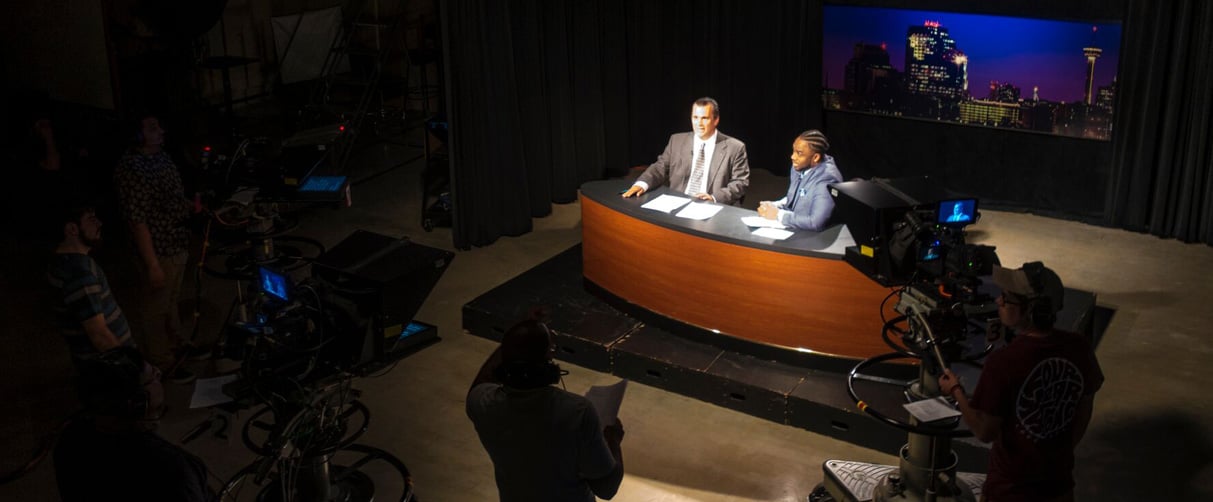
Radio-TV-Film
Program Level:
Degrees, Pre-Majors/Transfer
Department:
Arts
Institute:
Creative & Communication Arts
College:
SAC
What is the Radio-Television-Film program?The radio-television-film program consists of hands-on courses in the fundamentals of in-studio and off-site television production, radio station operation, digital audio production, writing for radio, television, and film, and cinema production. Students in the program learn about camera operation techniques used in the television and film industries, digital audio production techniques for both field and studio recordings, and writing, announcing, and producing for radio, television, and film. What will I learn?The radio-television-film program prepares students to enter the television and radio broadcasting industries, and other related media industries such as film, marketing and advertising, public relations, and corporate communications. Students receive hands-on experience at KSYM radio station, work in many production studios for TVSA television, and develop sound design and audio production for a variety of multimedia applications. Technical courses are balanced with theory-based courses so students can experience a critical approach to the industry. Students work with current industry-standard software programs and state-of-the-art equipment. |
What can I do with this course of study?The means of creating and distributing content have changed dramatically with digital technologies and streaming platforms. As traditional outlets have consolidated, more democratic channels have opened for those who can create compelling content that meets the audience’s appetite and can be distributed on demand on a variety of devices. Graduates are qualified to be employed by broadcast radio and television stations, film crews, lighting, and staging companies, advertising agencies, media production houses, recording studios, concert venues, theme parks, churches, and organizations that use multimedia approaches to deliver content to a private or public audience. What's special about our program?The radio-television-film program is more affordable than other programs offering a similar curriculum. The facility is equipped with two fully functional broadcasting studios that produce content for TVSA in collaboration with the City of San Antonio, a multi-track recording studio and broadcasting opportunities on community radio station KSYM, offering hands-on experiences. |
-
Student Media Archives
Check out the work our students are creating. The Student Media Archive contains a wide range of class projects a student can expect to complete within our program.
-
Job Opportunities/ Internships
Interested in practicing your skills outside the classroom? Check out our virtual job/internship board. Opportunities will be posted when they become available. **These opportunities are not guaranteed. It is the student's responsibility to apply and/or reach out to the company or contact person.
Virtual Job/Internship Board (Coming Soon)
Interested in posting a job opportunity or internship?
If you’re a local area employer interested in partnering with the RTVB department, please submit an intern request form along with any information and materials. These opportunities will be shared with students as appropriate.
Intern Request Form (Coming Soon)
-
RTVB News
Contact Us
|
Dr. Jonathan Lee
|
James Borrego |
Connie Cobbs |